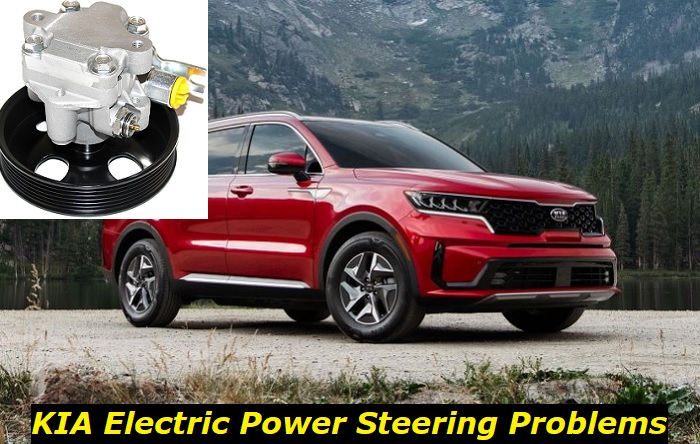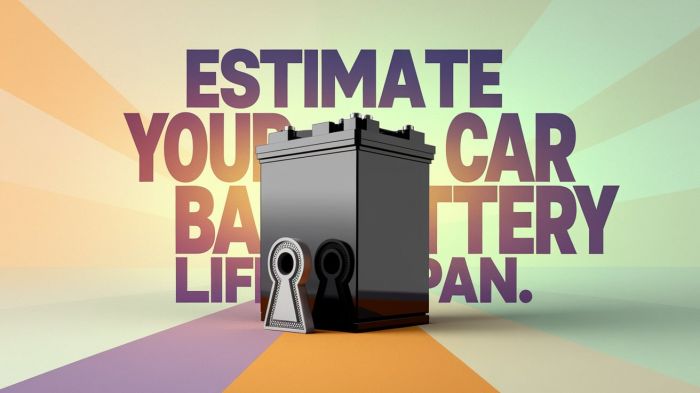Do you drive a KIA? Some of these cars have electric power steering, which means instead of the hydraulic system, they utilize an electric motor to aid in steering. That also means that they do not have any fluid to leak. Therefore, the question is, what causes KIA electric power steering problems if no fluids are leaking? And what are the symptoms of a faulty EPS?
Electrical equipment problems highlights
- Level of urgency:low
- DIY inspection:possible
- DIY repairs:possible but complicated
- Can you drive?yes
- Price of repairs:$150 - $350
- Ifignored:problems may develop and escalate
- Ways to fix:diagnose and replace the broken parts, try resetting the affected units

How the Electric Power Steering System Works
EPS uses an electric motor to help the driver turn the steering wheel. The electric motor is linked with the steering column and works with the rack-and-pinion to make steering easy and smooth. The electric motor is basically used to provide a boost when you turn the wheel. The system works with these two important sensors - torque and speed sensors.
The Torque Sensor determines the amount of assistance the electric motor provides. When you turn the wheel, the torque sensor estimates the energy you exert on the steering wheel and sends a signal to the electronic control unit, determining how much help you'll need from the electric motor.
The Speed Sensor, on the other hand, measures the rotating speed of the steering wheel. It then sends a signal to the electronic control unit. The ECU combines the torque sensor data with the speed sensor's to determine how much assistance is required from the electric motor.
Signs and Causes of Electric Power Steering System Failure
When the EPS is failing, you will experience these symptoms:
- The EPS Warning Light Will Illuminate
If the electric power steering system in your KIA is failing, you'll notice a warning light on the dashboard. When this shows up, it's almost certain that your KIA has a problem in its EPS system. You should see a KIA specialist to have the vehicle checked and fixed as soon as possible.
- Steering Becomes Unstable
One of the most noticeable signs of a faulty steering system is when the vehicle starts pulling in one direction. When the EPS system in your KIA starts to fail, you will notice this problem. This is a very dangerous failure. It makes it hard to keep the vehicle in its lane.
The culprits for this issue are primarily a faulty sensor or a bad electric motor. If the sensors or the motor aren't working correctly, they may provide more assistance to one side than the other. The vehicle will pull in that direction. When this happens, you should only drive your KIA if you are headed for a dealership or service center to have the problem checked.
- Soft Steering At High Speeds
It is easy to turn the wheel at high speeds than at low. The electric power steering works in a way that at low speed, it provides more assistance than when the vehicle is speeding. If the steering is becoming soft at high speeds, the electric power steering in your KIA is failing.
This is a dangerous problem because it causes the steering wheel to feel slippery, making the vehicle lose stability. If the EPS provides unnecessary assistance, driving on winding roads will be dangerous. You push the wheel slightly to negotiate a turn, but due to the electrical help, it goes all the way. It can even throw you into the bush. Soft steering at high speeds is a red light that your EPS requires diagnosis.
- Noise from the Power Steering Motor
If the electric power steering in your KIA begins to fail, you may hear a high-pitched noise coming from the EPS motor. The noise is produced by the grinding of gears within the motor. And the more the system deteriorates, the louder the noise becomes.
When this happens, the motor will not provide sufficient power to boost the steering wheel during turning. Additionally, if the motor isn't the proper size for your vehicle, it will not provide the required assistance.
- Power Loss
A faulty EPS system may cause a loss of power assist. When your KIA loses its steering power assist, it may be difficult to control the vehicle, especially if the power loss is sudden. The electric power steering loses power in two ways; sudden and gradual. While both are dangerous, a sudden power loss may cause devastating effects because it may happen when you are already speeding.
Gradual power loss isn't easy to notice at first. It grows over time. Eventually, you won't be able to easily turn the steering wheel, which can make long-distance drives quite tiring.
- Steering Rack Vibrations
If you notice vibrations coming from the steering wheel, visit your KIA service center or dealership. There could be a problem with the electric power steering system. The EPS in your KIA uses rack and pinion to convert the steering wheel rotation motion into linear motion, which is then used to turn the wheels in the desired direction.
If the rack and pinion aren't aligned properly, you may experience vibrations in the steering wheel. While it is good to visit a mechanic to diagnose your vehicle and fix the problem, vibrations in your steering wheel are primarily caused by damaged rack and pinion.
What Causes KIA EPS System Failure?
- A Faulty Control Unit
If the electric power steering in your KIA is failing, the primary culprit is a faulty control unit. Control units are the brains of every system. In your KIA, the control unit is responsible for receiving and reading data from the sensors, including the torque and speed sensors, and transmitting commands to the EPS motor. If there's a fault in the control unit, it may send incorrect or inconsistent orders to the motor, thus causing steering problems.
If the control unit isn't calibrated correctly, your vehicle will experience issues that may lead to electric power steering failure. If it's not correctly calibrated, the control unit will not interpret sensor data correctly.
- Faulty Sensors
The electric power steering in your KIA depends on sensors to function properly. These sensors are responsible for transmitting data about the steering wheel turning speed, steering angle, the energy you exert during turning, and other factors to the EPS motor. If one of these sensors isn't working right, the motor will receive incorrect data, which could cause the electric power steering to fail.
Sensors may fail for several reasons. One of the most obvious is normal wear and tear. A damaged sensor should be replaced with an immediate effect. If they aren't damaged, the sensors can be recalibrated. Either way, have a mechanic diagnose your vehicle and provide a comprehensive report on what you should do to fix the problem.
- A Faulty EPS Motor
The electric motor is a component that communicates with the steering wheel for easy and smooth turning. It is one of the essential parts of electric power steering. If the electric motor faults, the entire EPS system fails. The electric motor may fail for several reasons, one being worn-out brushes in the motor. The brushes transfer electrical current to the rotor. If they fail, power transmission is interfered with, which translates to a failed electric power steering.
If the bearings wear out, the EPS motor will likely fail. The bearings hold the rotor in place and allow its spinning. The electric power steering is bound to fail if the rotor fails to rotate due to worn-out bearings.
Can You Drive With a Faulty Electric Power Steering?
Yes, you can still drive with a faulty electric power steering. However, it exposes you to multiple dangers on the road. If the system fails while you're driving, turning the wheel suddenly or gradually becomes difficult. When this happens, you'll hardly keep the vehicle in its lane, and it's dangerous because you can easily veer off course. Depending on how advanced your KIA is, some models may disable the steering system completely.
Final Words
If you ever find yourself in a situation where the electric power steering in your KIA has failed, keep calm, and don't panic. Try to remain in control as you slowly bring the vehicle to a full stop. Once the vehicle is properly parked on the side of the road, put the hazard lights on, and reach your mechanic for assistance.
About the authors
The CarAraC research team is composed of seasoned auto mechanics and automotive industry professionals, including individuals with advanced degrees and certifications in their field. Our team members boast prestigious credentials, reflecting their extensive knowledge and skills. These qualifications include: IMI: Institute of the Motor Industry, ASE-Certified Master Automobile Technicians; Coventry University, Graduate of MA in Automotive Journalism; Politecnico di Torino, Italy, MS Automotive Engineering; Ss. Cyril and Methodius University in Skopje, Mechanical University in Skopje; TOC Automotive College; DHA Suffa University, Department of Mechanical Engineering






Add comment